Did you know that fibromyalgia affects 10 million people each year in the U.S. alone? For patients who suffer from being a part of this statistic, chronic muscle pain, fatigue, sleep problems, and tender joints are all too familiar. With persistent stress on the muscles and soft tissue, any form of exercise can be downright unpleasant. However, low-intensity activities can actually improve symptoms and boost the effectiveness of treatment. For more information on treating fibromyalgia, contact the experts at CRPM today for professional pain management in OC.
How Does Exercise Help Fibromyalgia Symptoms?
Recent research has confirmed that exercise can help improve fibromyalgia symptoms. However, many patients who suffer from the chronic pain associated with the condition wonder what the science is behind that. Here are five benefits of exercise that can directly improve symptoms of fibromyalgia:
- Helps maintain bone mass
- Improves balance
- Reducing stress
- Increases strength
- Controls weight
Should Exercise Be a Part of My Treatment Plan?
According to Medical News Today, the answer is a resounding yes. In addition to building endurance, keeping your heart healthy, and providing fast, effective stress relief, exercise can be an integral part of a successful treatment plan for a variety of patients.
However, it is of the utmost importance that it is in conjunction with a recommendation from your doctor. Since they are in charge of your treatment plan, it is essential to consult with them on adding and removing items from your treatment.
Therefore, make sure to check in with your doctor before starting an exercise plan on your own. Plus, they may even have specific recommendations on how to tailor exercises to your particular symptoms!
What Exercises Are Recommended?
While it is important to always consult with your doctor first, there are a few recommendations that are generally recommended across the board.
The first of which is to stick with low-intensity exercises that won’t aggravate your symptoms. Exercises like walking and swimming can provide cardiovascular improvement without placing a lot of pressure on your joints and muscles.
Second, it is important to note that slow and ready wins the race. Jumping into a 30-minute jog on the first day can lead to more harm than good. Instead, start with a two-minute walk and work your way up from there. This will allow you to safely build your endurance without compromising your safety.
When Will I Notice Results?
Unfortunately, physical results never seem to show as fast as we want them to. While your weight and symptoms may not change after the first workout, it is crucial to focus on doing what you can today instead of what could happen three months down the road. The key to long-lasting results is being consistent with the small steps each day.
Set a goal to move your body for two minutes a day for the first week, and then gradually work your way up to 30 minutes a day. Even if you don’t see the results you are hoping for physically, your mental health will get a boost by keeping a promise to yourself and working toward your goal.
Fibromyalgia can be a painful condition that inhibits you from all the good things life has to offer. If your symptoms are chronic or have become unbearable, then it may be time to seek treatment from the experts at CRPM.
Between their pain treatments, regenerative medicine, and patient resources, their team will be able to get you back on track to the pain-free lifestyle you’ve been missing. To schedule an appointment to discuss your diagnosis and symptoms, visit our.


